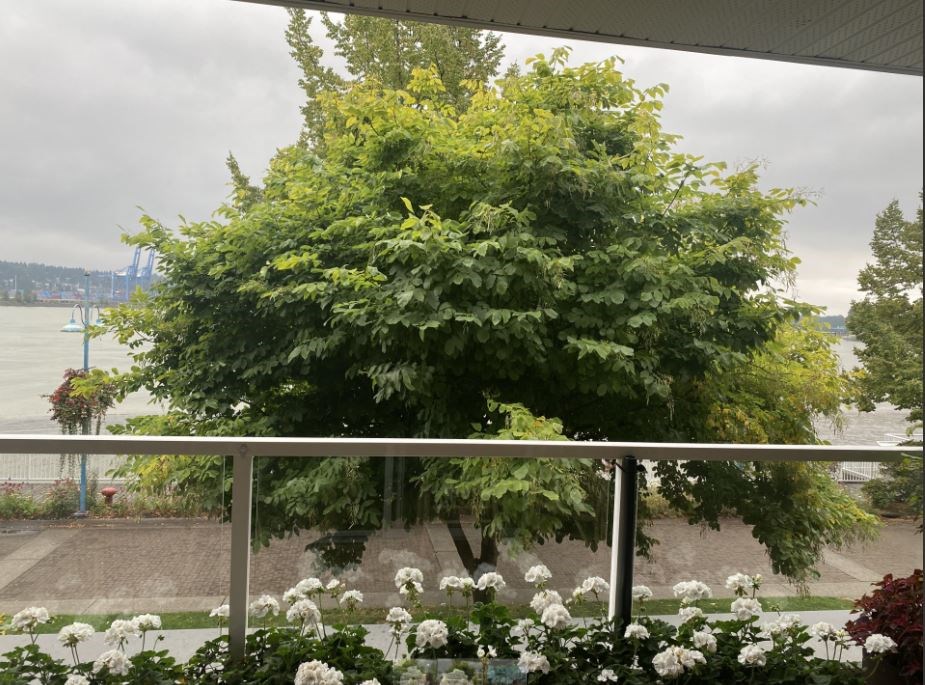The City of New Westminster relocated a rare tree to a new home earlier this year, but that’s not a feasible plan for all trees, say city staff.
Earlier this year, the city relocated a rare loquat leaf oak (Quercus rysophylla) from a traffic circle at 13th Street and Seventh Avenue to the west entrance of Moody Park, near the outdoor pool. But staff have indicated that’s not feasible for trees causing concerns on New Westminster’s waterfront.
At its Aug. 28 meeting, council heard from some Quayside residents who are concerned about a longstanding issue related to three trees in front of their building. The trees are growing taller and wider than ever envisioned, thus blocking views and impacting natural light into some of the residences.
The building’s strata would like the trees removed or relocated elsewhere.
Dean Gibson, the city’s director of parks and recreation, said staff have concluded it’s not viable to transplant the three trees to a different location, for a number of reasons. That includes technical issues related to having the type of equipment needed to move trees of this size.
Gibson said the city also considers the uniqueness of the species when contemplating relocation of trees. He said the tree that was moved from the West End to Moody Park was “a very, very unique” species, thought to be one of one of a kind in Western Canada, if all of Canada.
“It has thrived particularly well in our climate, which is not typical for that particular species,” he said. “And so, in that particular case, it was assessed that it was warranted to make the investment … to transplant that particular tree.”
Gibson said the three trees causing concerns for some Quayside residents don’t meet that same criteria. In addition, he said the city believes the trees are “past the point” of being able to be transplanted.
Erika Mashig, the city’s manager of parks and open space planning, design and construction, agreed.
“The older, more mature and more established the tree is, the likelihood of surviving the transplant and re-establishing itself it does go down,” she said. “The tree gets well acquainted to its microclimate and its environment, and then moving it somewhere else, it's highly disruptive. And we couldn't guarantee the survival of that tree.”




